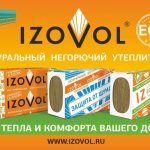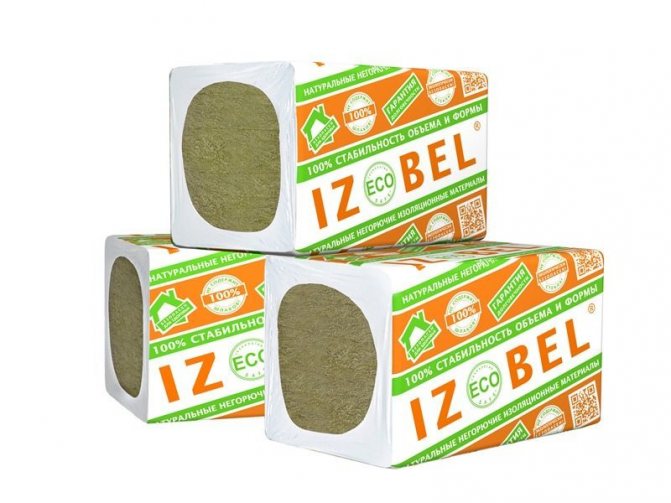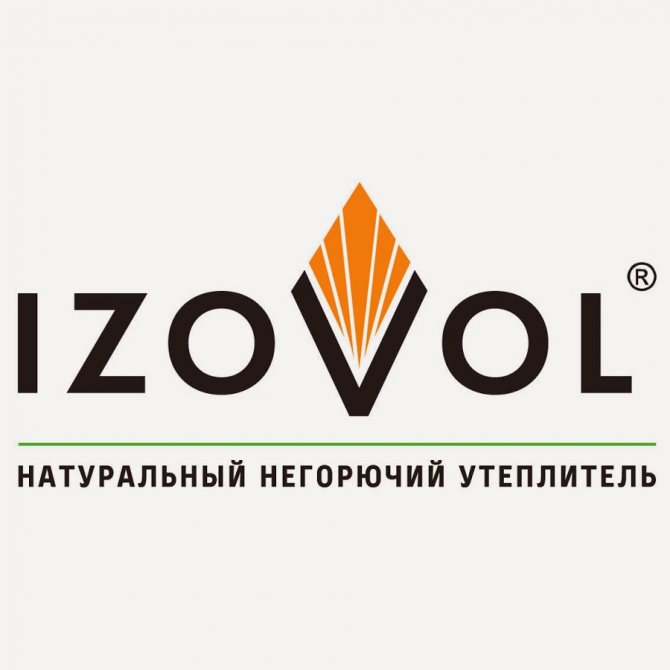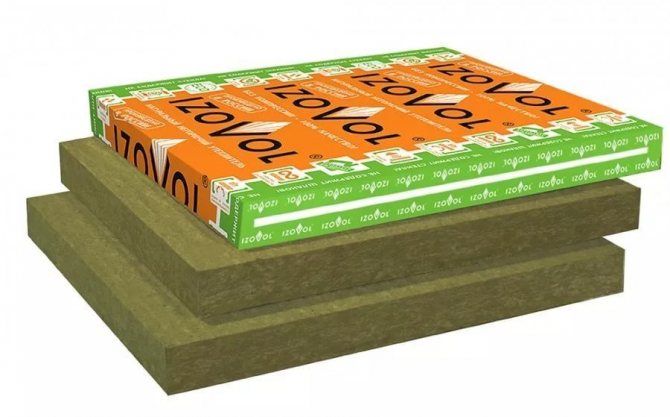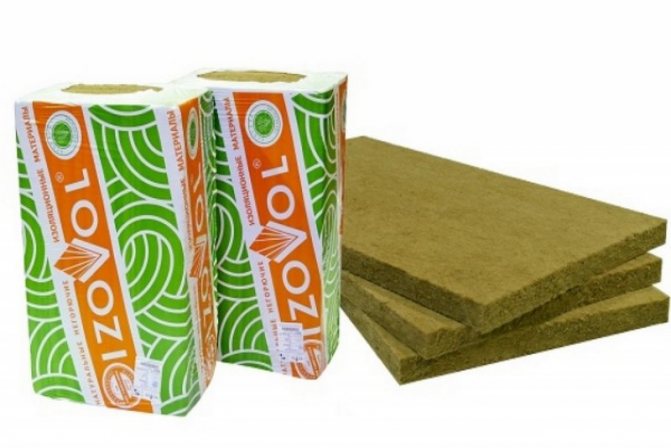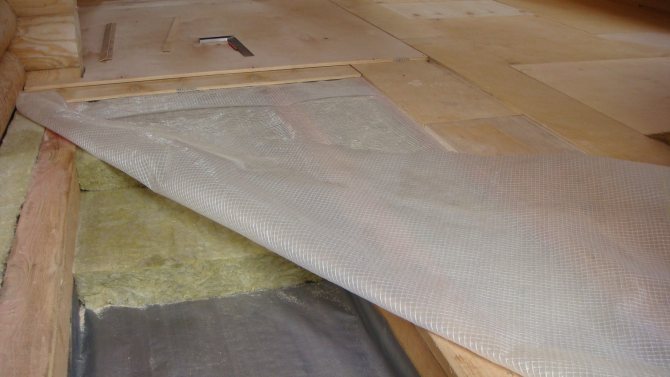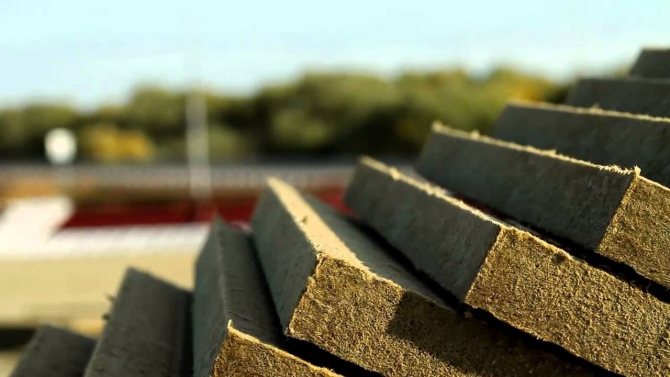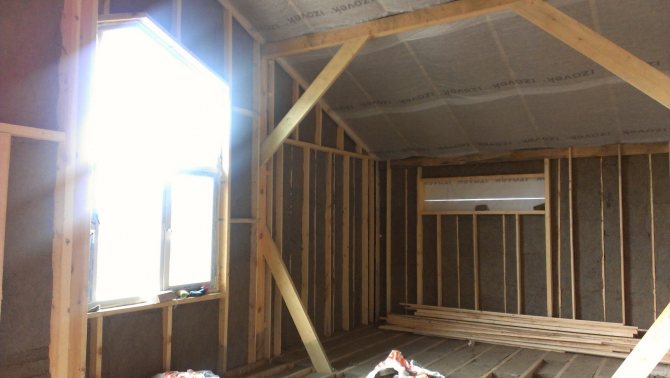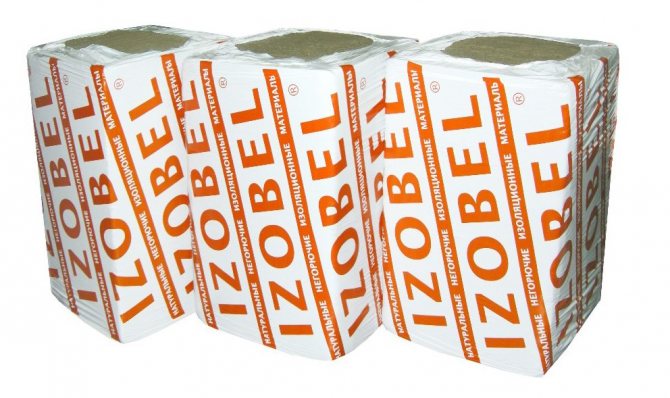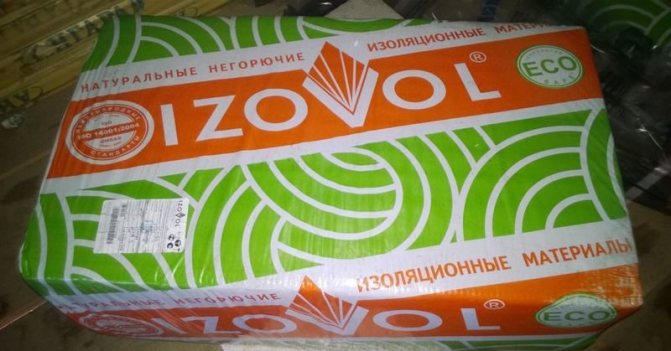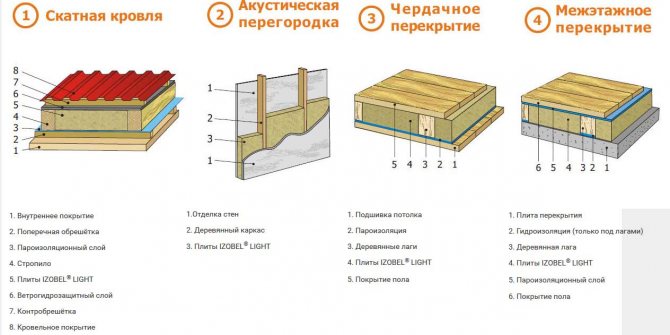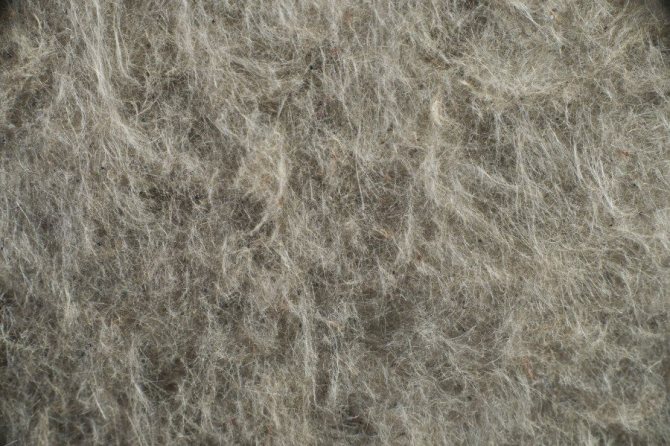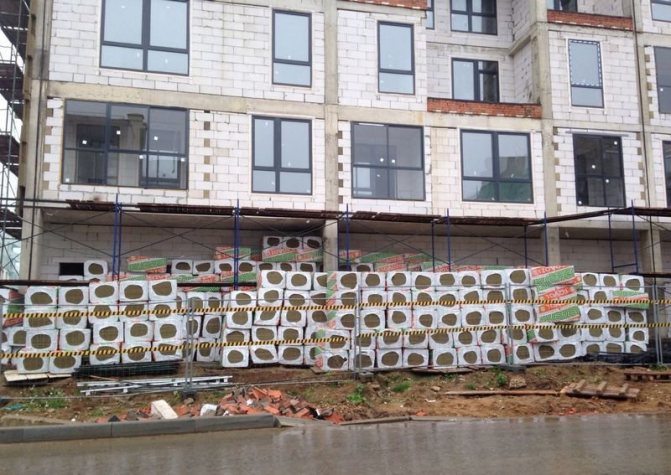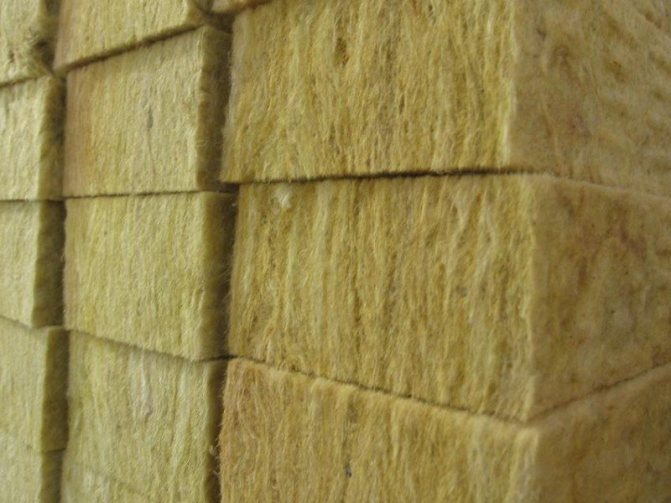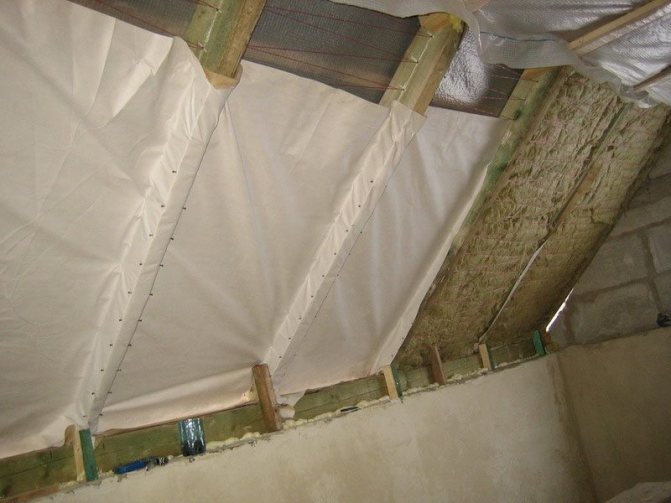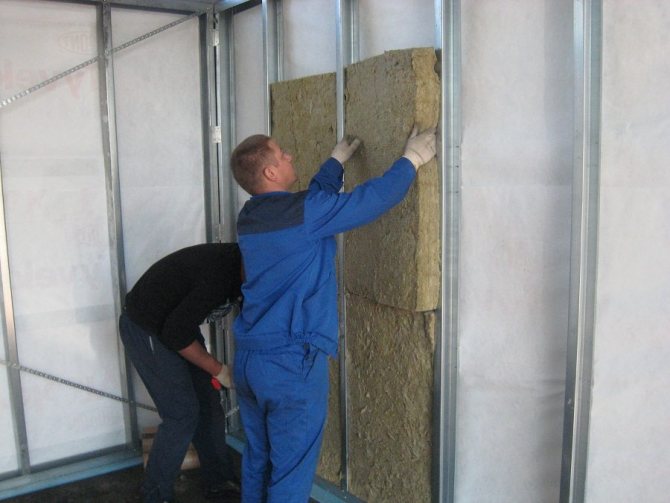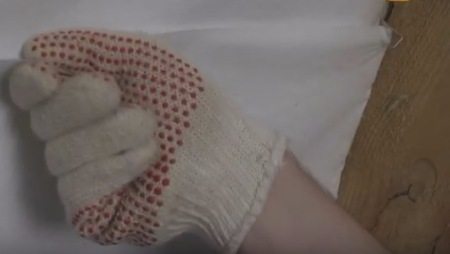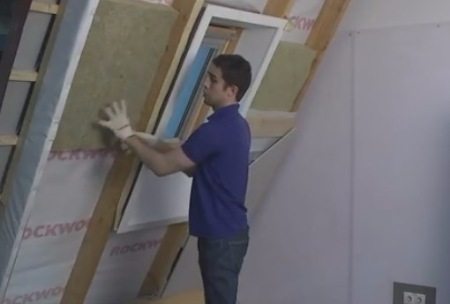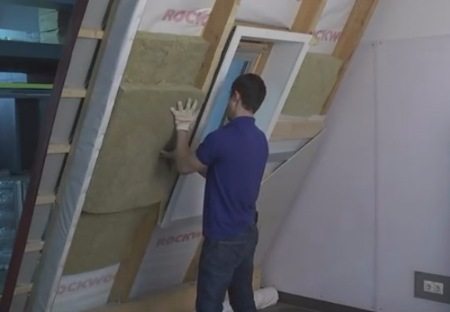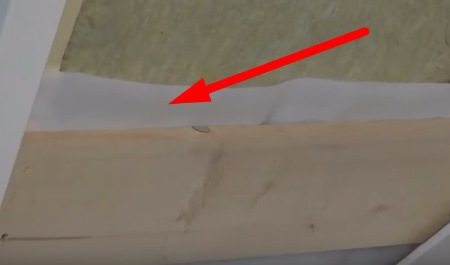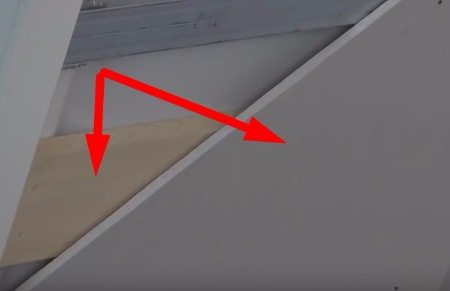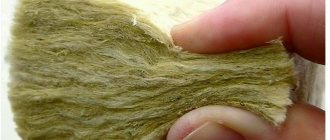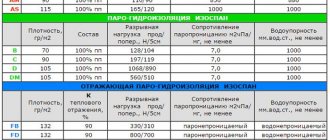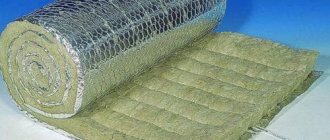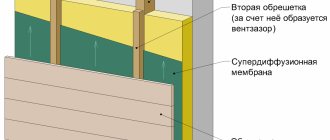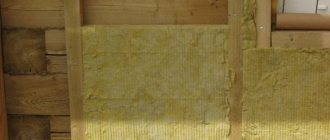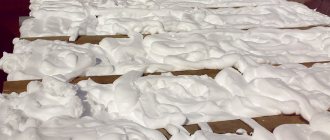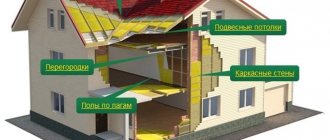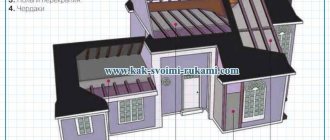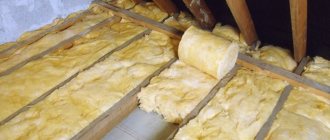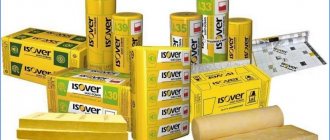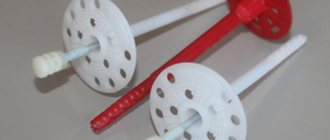Thermal insulation IZOVOL
Izovol company - produces building materials for complex solutions to problems (heat, sound, fire) insulation. Izovol brand insulation is used in systems, structures and structures for various purposes, as well as used for the reconstruction of buildings. Izovol technologies are successfully applied in medicine, energy and mechanical engineering, which makes the company an absolute leader in its industry.
Izovol products are distinguished by an incomparably high level of quality. It is possible to maintain a consistently high level of production at the enterprise thanks to the availability of modern technology and experienced specialists who control the quality of goods at every stage of production.
The latest technologies developed by the best specialists of the IZOVOL laboratory reduce the risk of defects and defects, therefore the company gives its customers a guarantee for each product.
Another of the main principles of Izovol is the production of environmentally friendly insulation, safe for human health. The material underlying the materials is pure basalt fiber, so choosing Izovol, you can be sure that you will not harm yourself.
IZOVOL is proud of its innovations and values every client. The management of the plant is confident that a responsible attitude to production, combined with attention to the Consumer, guarantees the success of any product.
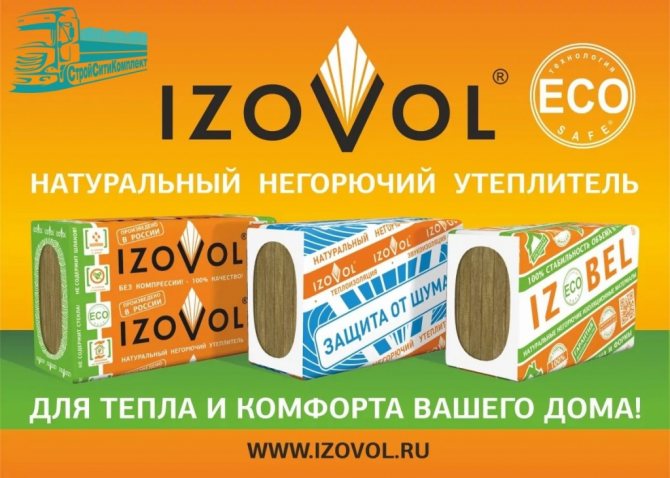
Characteristics of Izovol heaters
Thermal insulation of walls is a guarantee not only for the insulation of the outer walls, but also for sound insulation and fire resistance. Insulation for walls outside is produced using an environmentally friendly technology for producing fibers - ECOSAFE, which is why Izovol thermal insulation is used in residential construction. Izovol material density helps to reliably isolate walls from outside noise and drafts.
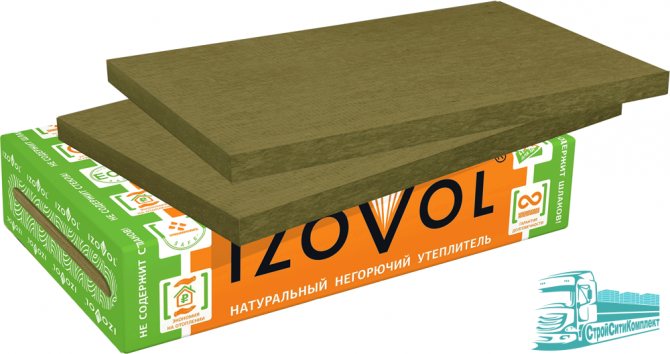

What insulation is better - insulation Izovol
On the website of Trading House SSKkomplekt we offer you to familiarize yourself with the best Izovol insulation products:
| Izovol 35; |
| Izovol 75 (Izovol Art 75); |
| Izovol 50; |
| Izovol 90; |
| Izovol 100 (Izovol 120 f); |
| Izovol 150; |
| Izovol acoustician. |
It should be noted that Izovol mineral wool is a certified and high-quality building material that does not cause harm and damage to health. The thickness of Izovol insulation guarantees protection from external influences. Thermal insulation of the facade is essential in residential construction. Thermal insulation is suitable for warming interfloor ceilings, rooms with high humidity and warming of basement floors.
Insulation for the house outside Izovol has a warranty period and will not upset the owner of the house. The calculation of the amount of thermal insulation for a construction site is made by architects and technologists when planning a building project. Roof insulation is required to insulate frame walls and floors between floors.
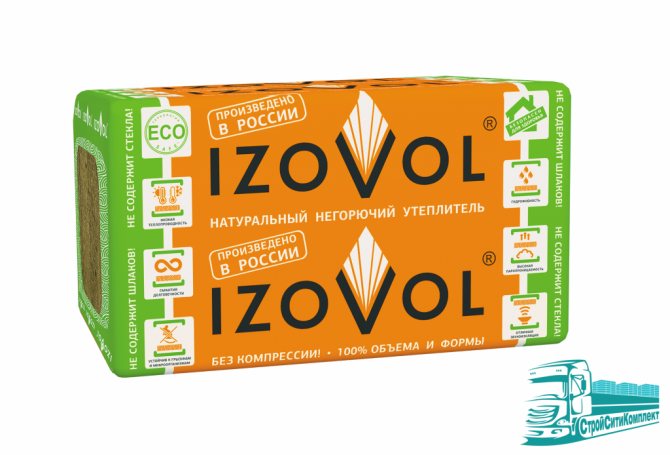

Buy insulation for walls Izovol
You can always buy Izovol insulation inexpensively in the StroyCityKomplekt trading house. An official Izovol dealer is ready to provide you not only with a guarantee from the manufacturer and all the necessary documents, but also offer a favorable price for insulation. Order insulation at StroyCityKomplekt by calling the number indicated on our website and get a free consultation and cost estimate from our managers.
How Isobel Insulation Is Made
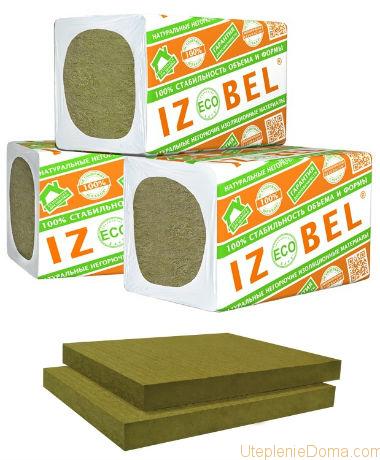

In green packaging, the density of the mineral wool is 25 kg / m. cub.
Isobel is a basalt fiber insulation. To obtain such a fiber, the rock mined in dormant volcanoes (frozen magma) is delivered to a processing plant where it is crushed into small pieces. Then the resulting placer is melted at a temperature of over 1,000 cu.degrees, the result is a liquid mass.
To obtain fibers from molten magma, a strong stream of air is directed to it. The material seems to be sprayed, and when the fibers land in a special container, they no longer stick together. To make Isobel slabs, basalt fibers are treated with an adhesive and sent to a molding machine, where the material is given the required dimensions. Also, the molding machine compresses the mineral wool to the set level, in our case it is 25 or 35 kg / m. cub.
The last stage is the inspection of the insulation by the technical control body for compliance with the established characteristics and the packaging of the thermal insulation in polyethylene. Unlike glass wool, basalt fiber is packaged in its original form, that is, not compressed. Advantages of Isobel insulation:
- produced in the Russian Federation;
- is cheap;
- does not contain blast furnace slag and coke.
It should be noted that phenol formaldehyde is added to the glue for basalt fiber.
In its pure form, this is a poisonous substance, but in the composition of the insulation it does not pose any danger. In addition, phenol formaldehyde is contained in all plastic products, cabinet furniture and other materials that surround us in everyday life. The claims that mineral wool is dangerous to health are too exaggerated. If you want absolutely ecological thermal insulation without any impurities, then use expanded clay to insulate the floor, walls and ceiling.
To reduce heat loss, thermal insulation of pipelines with mineral wool in rolls or cylinders is necessary.
Read about which mineral wool is better for the attic in this article.
Among the products of the plant are the following plates
IZOVOL "Noise protection" - designed for soundproofing rooms and buildings, the slabs have a size of 1000x600 mm, thickness from 40 to 250 mm, with a step of 10 mm. Has a flammability group - NG
IZOBEL (IZOBEL) - the lightest slabs, with a density of 25 kg / m3, are used for thermal insulation of unloaded structures (partitions, floors on logs, interfloor floors)
IZOVOL slabs, general construction thermal insulation of already higher densities, the names are quite short, but it is not difficult to understand by the name where the slab is used
- Izovol L-35 - light, non-loaded structures
Insulation of external walls under ventilated facades
- Izovol St-50 - density 50
- Izovol St-60 - density 60
- Izovol St-75 - density 75
- Izovol St-90 - density 90
Mineral wool lined with canvas, as an outer layer of insulation in ventilated facades
- Izovol V-50 - density 50
- Izovol B-75 - density 75
- Izovol V-90 - density 90
Insulation under the plaster facade (see article)
Insulation of flat roofs
- Izovol K-100
- Izovol K-120
- Izovol K-150
- Izovol K-175
The upper layer of thermal insulation in flat roofs (KV-roof top)
Factory branding
Izovol produces the following types of insulating materials:
- General construction thermal insulation
- Soundproofing
- Technical thermal insulation
- Fire protection
- Thermal insulation for sandwich panels
Objects where the products of the plant were used. These are mainly the central regions and the south of Russia, this is due to the location of the plant.
Not a single new building will last even a decade if it was built without the use of thermal insulation materials. Thanks to them, maximum heat savings are achieved, there are no drafts and "cold bridges" inside the walls, and the service life declared by manufacturers allows you to forget about major repairs of the building for decades.
What are the types of Izovol?
Each type of insulation has its own characteristics and dimensions. The parameters of the most commonly used models are described below.
Isobel
The density of such slabs is 25 kg / m3, in some models - 20 kg / m3. They are used on non-loaded sloped structures and on horizontal surfaces (log floors).At full immersion, the volumetric water absorption is 1.5%, and the thermal conductivity is 0.036 W / mK.
Izovol ST
The mats are made from thin basalt fibers. They differ in their density. There are models with indicators of 50, 60, 75 and 90 kg / m3. The water absorption of this material is up to 1%.
It is used for floors, sloped roofs and interior partitions. All dimensions of the insulation are indicated on the manufacturer's website. This model has dimensions of 100 * 60 cm.
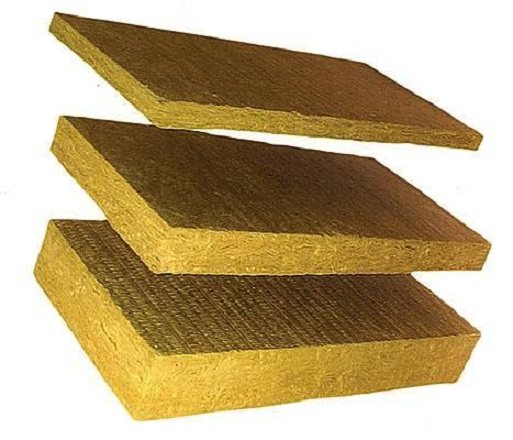

Different thickness of insulation
Izovol V
This model is specially designed for thermal insulation of ventilated facades and is finished with fiberglass. It contains a protective layer that prevents the blowing out of basalt wool and plays the role of wind protection. The density of this material is 50, 75 or 90 kg / m3. Besides thermal insulation, it provides sound insulation and fire safety. Like all other types of Izovol, it has a flammability class NG, that is, it is not flammable.
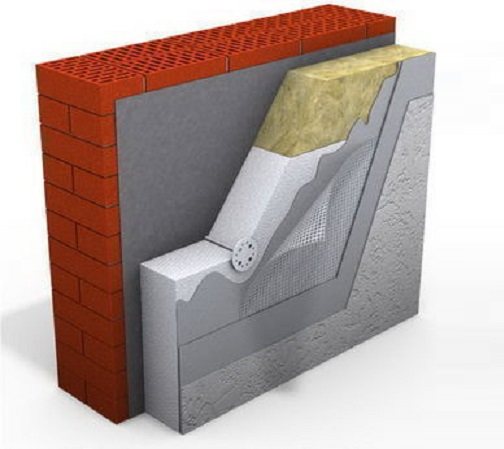

Plaster facades
Izovol F
It is used as a heat-insulating layer in facade systems with a plaster layer, as fire-prevention cuts in structures using expanded polystyrene. The thickness of the material ranges from 4 to 25 cm. Izovol F has dimensions of 100 * 60 cm. Plates are produced with a density of 100 to 150 kg / m3. They have high strength, water absorption at full immersion - 1% and thermal conductivity of 0.036-0.040 W / m · K.
Izovol K
This model is used for insulating flat roofs, as an aggregate in reinforced concrete wall panels. One option for roof insulation is a two-layer system. If the first layer has a thickness of 10 cm, then it is best to use Izovol K. It is best to choose Izovol KV as the top layer.
A distinctive feature of this insulation is its almost square size: 100 * 120 cm - you can quickly cover large areas. Such material has a density of 100 to 175 kg / m3. The thickness of the slabs ranges from 4 to 25 cm.
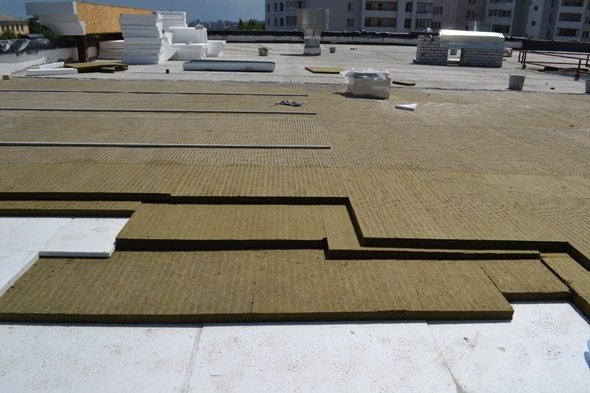

Thermal insulation of flat roofs
Izovol KV
Such slabs are used in one-layer and two-layer roof insulation systems. In the second version, a combination with Izovol K is used, it lies on the bottom layer. If the thickness of the heat-insulating layer must be large, two-layer insulation is used. The advantage of this insulation is its increased rigidity and moisture resistance. This allows the material to be used for operated roofs. Such plates perform not only heat-insulating, but also fire-fighting function.
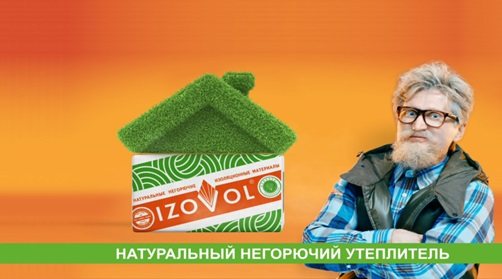

Izovol is a safe and reliable environmentally friendly non-combustible heat insulator
Izovol P
This material is used for thermal insulation of floors before concrete screed, for flat roofs, as well as other areas with high humidity. Izovol P with a density of 175 kg / m3 can withstand a load of no more than 65 kPa, while the insulation is not deformed. When using a material with a density of 100 kg / m3, a load of up to 35 kPa is allowed.
When insulating the floor, the material has a soundproof and fireproof effect. It is used to create underfloor heating or floating floors. Izovol P has standard dimensions 100 * 60 cm. Other characteristics are similar to other series of material.
Izovol L
This model is used in various areas of insulation, horizontal and vertical. It is used for roofs, interior partitions, attic floors. One of the special areas of application is the insulation of heating and ventilation systems, pipelines and refrigeration plants.
Insulation features
The area of use of isobel is to reduce the thermal conductivity of buildings for various purposes. In the production of insulation, EcoSafe technology is used, which reduces the amount of moisture absorbed by the material.Izobel slabs are a type of basalt wool (material with the lowest thermal conductivity) and are manufactured without the use of blast furnace slags. Typically, the insulation has a standard size (1000 × 600 mm, 1000 × 1000 mm, etc.).
Isobel can be produced not only from heavy basaltic rocks, but also from lighter ones like limestone or quartzite.
The resulting slabs weigh less and do not keep heat so well, but their density is higher, which affects the durability. A similar izobel is used for cladding places in a house where thermal insulation does not play a special role, and fire resistance and noise absorption are much more important (non-residential attics, ceilings, pitched roofs).
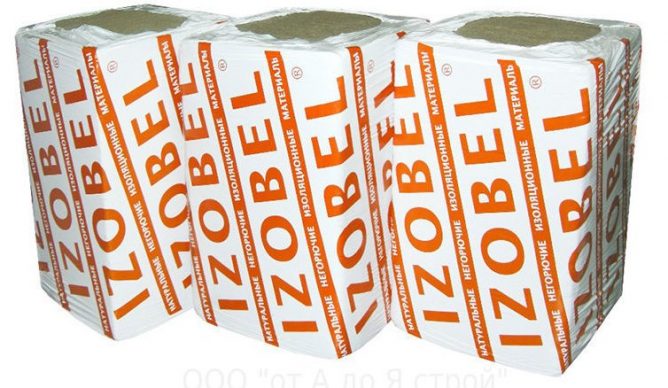

Features of mineral wool Izovol
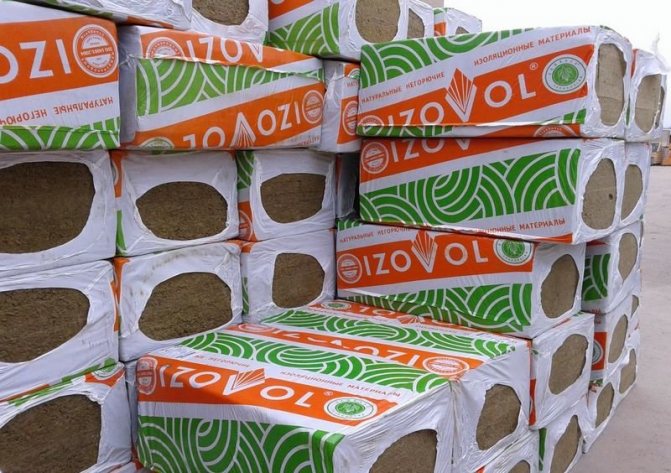

The body-insulating material Izovol has a number of advantages and benefits that are taken into account during the design of buildings and industrial complexes. Having familiarized yourself with the features of the insulation, you can compare all "yes" and "no" in comparison with other brands of mineral wool and make a decision in the direction of Izovol.
List of advantages of Izovol mineral wool:
- It is made from environmentally friendly natural raw materials, therefore all types of modifications are classified as environmentally friendly materials. EKO-cotton wool Izovol is a serious competitor to well-known world brands.
- The products are approved by the Ministry of Health and Pediatrics of the Russian Federation.
- Durability: mineral wool is a resistant fire barrier (fire safety class NG), cotton wool does not burn, it melts at a temperature of 1200 ° C.
- Izovol is an excellent material for eliminating background noise.
- Hygroscopicity - zero.
- Resistance to aggressive substances: absolute resistance to fuels and lubricants, acid and alkaline agents, alcohol solutions and essential oils.
- Does not collapse: rodents, insects and mold do not subject the mineral wool to destruction and decay.
- Endurance to temporary and permanent loads of vertical and lateral nature.
- Durability - the life cycle of mineral wool is more than 80 years.
- Acceptable cost.
- Zero thermal conductivity and high density.
- A wide range of products (casings, mats, rolls and plates).
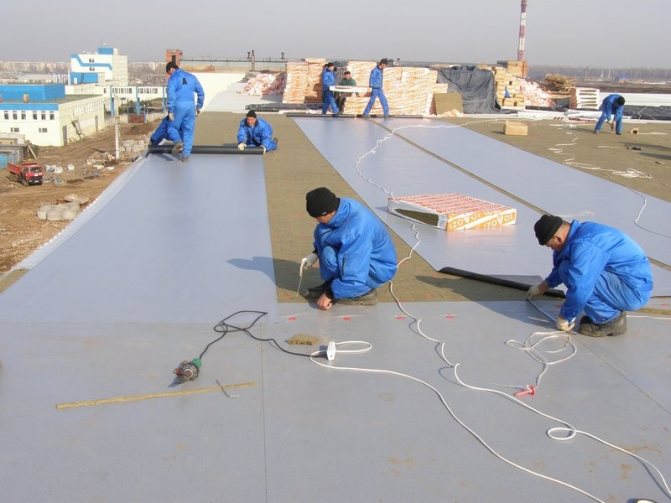



Attention! The super quality of Izovol has been proven by numerous laboratory and technical tests. And the end result proved that a 10cm thick mineral wool slab (with a slab density of 100kg / cubic meter) is even a masonry of 25cm rounded timber, 160cm building bricks, 50-75cm concrete and 200cm thick silicate bricks.
Features of installation isobel
Due to its ease of use, insulation is used almost everywhere. Thermal insulation with its help will be justified in such places:
- partitions between floors;
- floor;
- sloped roofs;
- attic;
- walls.
The only place that is undesirable to insulate with isobel is the foundation, since the slabs can get wet from interaction with the soil and fail.
Like any other mineral wool, insulation requires two additional layers - hydro and vapor barrier. The first protects the plates from getting wet from the outside, the second - from the inside. When installing Isobel on a sloping roof, it is recommended to make an air gap, the purpose of which is to drain the accumulating condensate.
The key difference between isobel like mineral wool and foam is that it is not mounted directly to the wall with glue, but is placed inside the cells formed by a wooden crate. Plus such a need - additional strengthening of the building frame, minus - financial investments.
Features of production technology
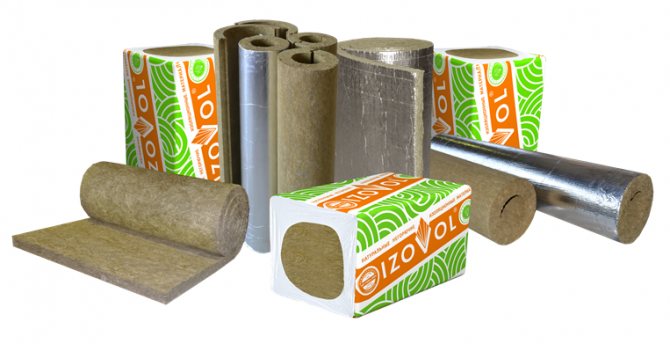

The assortment of the Izovol company includes basalt insulation - slabs, rolls, foil mats
Insulation Izovol is made from rock basalt rocks. For production, modern equipment is used that meets the state standard. First, the rock is melted to a liquid state in gas-smelting furnaces, which ensures high quality of the material obtained.
The fibers are centrifuged and blown, which allows you to achieve the correct shape of the insulation and its uniform density over the entire area. Air layers remain between them, so the appearance of cold bridges is excluded. Mineral wool is soft, hard or semi-hard to the touch. The material production process is fully automated.
Material specifications
Izobel heaters have approximately the same physical characteristics. For example, a plate with a size of 1000 × 600 mm is considered below. Its characteristics will be:
- density - 25 kg / cu. m;
- thickness - from 40 to 250 mm;
- vapor permeability - from 0.3 mg / m * h * Pa;
- flammability class - IV (best);
- thermal conductivity coefficient - 0.03-0.04 W / m * K;
- absorption of liquid at full immersion in water - up to 1.5%;
- moisture content by weight - up to 0.5%.
Insulation production izobel
The basis for the manufacture of fibers is basalt. The izobel insulation is produced in this way:
- The stone is crushed and melted at a temperature of 1200 ° C to the state of lava.
- Special machines blow threads out of it with directed air currents, which are collected in bunches.
- The fibers are impregnated with oil to ensure water resistance.
- Pressed to the desired thickness and cut.
- Check the quality and pack.
The fibers have a diameter of 2 to 7 microns, they are intertwined and bonded with formaldehyde resins.
Insulation advantages
Minvata would not have become so popular among consumers if it did not have a number of advantages. With regard to insulation of the Izobel brand, the qualities listed below are considered as such.
- Excellent thermal conductivity - coefficient from 0.03 to 0.04 - one of the smallest among heaters. If you add to this the thinness and elasticity of basalt fibers, you get an almost ideal material that allows you to significantly save on heating the room.
- Fire resistance - isobel belongs to the IV group of fire safety materials. In the presence of a nearby fire site, its physicochemical properties will remain unchanged; also the plates will become an obstacle in the path of the spreading fire.
- Long service life - the insulation made of basalt stone lasts at least 50 years, subject to storage conditions. Excess liquid will not in any way affect the material - the fibrous structure will easily let steam through and evaporate condensate.
- Weak water absorption - basalt is non-hygroscopic; only 1.5% of its volume can be filled with moisture. If water-repellent additives are used in the production, the value is reduced to 1%.
- Good vapor permeability - achieved by the fibrous structure of the material and promotes the use of isobel in baths, saunas or industrial premises.
- Sound insulation - depending on the thickness of the slab, they completely or partially neutralize extraneous noise.
- Resistant to corrosion, fungi, rodents, unattractive to birds.
- Affordable price - isobel is on average 15% cheaper than mineral wool analogues; for a slab with an area of 1 sq. m and a thickness of 50 mm, the consumer will give from 100 to 300 rubles.
- Environmental safety - achieved by a minimum amount of chemical components used to increase water repellency, and even then not always.
The above is only a part of the positive aspects of the izobel insulation. Other benefits are easier to perceive in operation rather than describe.
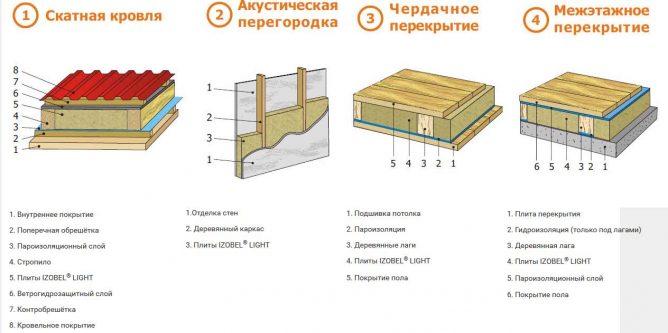

Installation
Plates lend themselves to self-assembly. As an example, consider the protection of a pitched roof of a private house. The day before, you should prepare all the necessary equipment and the plates themselves. When working, we need a tape measure, a knife, a stapler, bars and plastic wrap. It is also important to prepare the surface itself. The roof is checked for leaks, rot and other imperfections. They must be removed before the start of the insulation work, otherwise the thermal insulation may be seriously damaged.
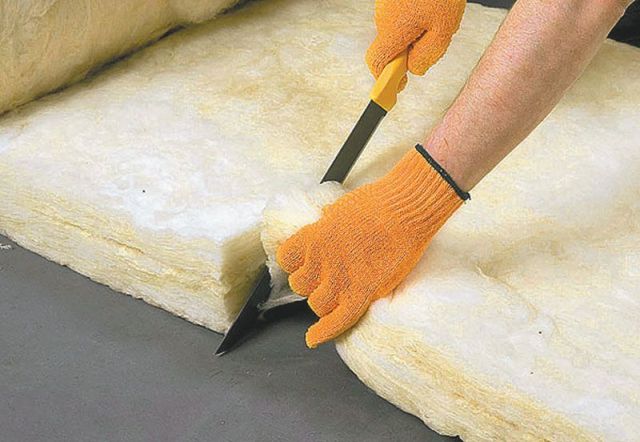

After the necessary work is completed, a crate made of wooden bars is nailed onto the roof rafters. The recommended cross-section of the components is 4 * 4 cm. The lathing creates a gap between the roof surface and the heat insulator, preventing the penetration of condensate into the room.
Installation of slabs
The next stage is the installation of insulation plates. They are placed on the bars between the rafters. They are fastened together with a construction stapler. Cover the seams with double-sided tape to hide the seams. It remains only to lay a layer of vapor barrier. In its capacity, polyethylene or other similar material can be useful.
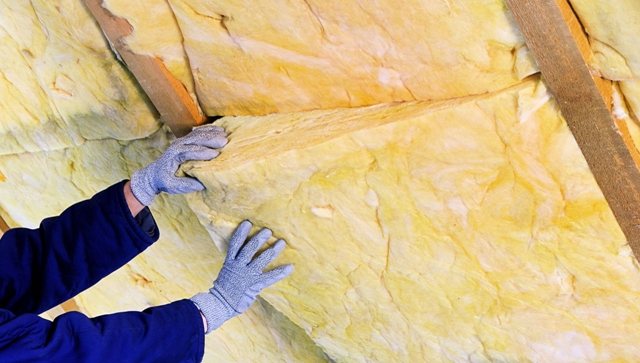

The process ends with finishing. The insulation is covered with a selected finishing material, for example, drywall.
It's simple: installing Isobel requires basic building skills. For safety reasons, work should be carried out in a special suit - the material generates a lot of dust.
Disadvantages of thermal insulation material
Alas, even Isobel is not devoid of disadvantages, although there are not so many of them. These include:
- the possibility of loss of thermal insulation properties at the joints of the slabs or in the area of contact with the crate (the joint is not sealed with a sealant or foam, like polystyrene);
- an additional waterproofing layer is required, since with a direct hit of water, the plate will swell and cease to be useful;
- a crate of certain sizes is required (according to the dimensions of the izobel insulation slabs);
- the process is complicated by the use of a mask, gloves and clothing that covers the skin; otherwise, small particles that come off the stove will get on the skin, causing allergies or scabies.
Despite the slight disadvantages of isobel, the material is still recommended for use in almost any room. It is accessible, it is easy for them to sheathe a section of the house, and the next replacement of insulation, subject to the installation technology, will not have to be done earlier than 50 years later. When buying material, the consumer will save a good amount, and during operation he will be convinced of the right choice.
An example of using Isobel boards
Instructions for using this material for thermal insulation of pitched roofs are presented in the table:
| Illustration | Stage of work |
| Preparing stingrays. Isobel thermal insulation boards, when installed on the inner side of the slopes, must be protected from precipitation. For this, a waterproofing vapor-permeable membrane is mounted on top of the rafters. |
| Laying the first row of slabs. We lay the plates between the rafters without gaps. Fixation is carried out either with the help of stretched nylon threads, or due to the elasticity of the edges of the panels. |
| Laying the second row of slabs. For more effective thermal insulation, it is advisable to mount the plates in two layers. We lay the second layer of insulation on top of the first in such a way that the joints in the rows do not coincide. |
| Vapor barrier. On the inside of the roof, we cover Isobel with a vapor barrier membrane, which will protect the basalt wool from getting wet. |
| Sheathing. On top of the vapor barrier on the rafters, we stuff the transverse beams of the counter-lattice. We attach plasterboard, plywood, lining, etc. to the counter-lattice. |
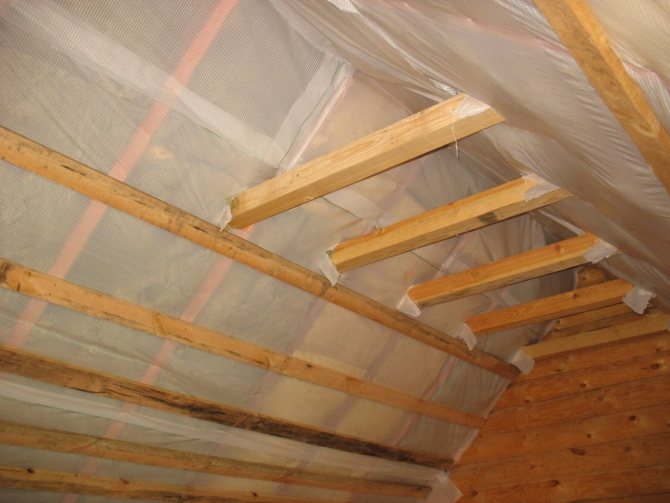

This is how the roof slopes look after the installation of the vapor barrier immediately before the cladding
When insulating partitions and horizontal surfaces, the material is mounted in a similar way. The main thing is to provide protection against moisture and sealing!
Characteristics and parameters
Currently, manufacturers offer isovol in mats and rolls. As mentioned above, this is basalt wool, which is made by melting and pulling threads from molten stone mass. It is the fibrous structure that creates the possibility of the formation of air capsules between the threads, and this, in turn, is the most powerful thermal insulation.
Izovol production is modern, it uses high-tech equipment and high-quality raw materials, so the technical characteristics of the material can be classified as "high". We add that this technology is patented and has an international quality certificate ISO9001: 2000 No. 41060. The leader in this field can be classified as domestic.
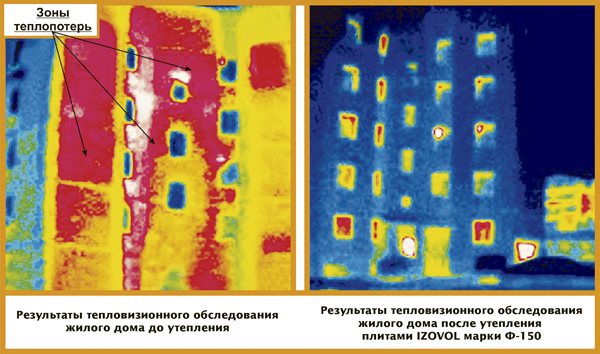

Heat map of using Izovol heaters
Insulation advantages
- Isovol technonikol mineral wool insulation made of natural materials is environmentally friendly. It is harmless to human health and life. It is distinguished by:
- High fire-fighting properties. The insulation begins to melt at a temperature of + 1110C. These are irreplaceable qualities for modern construction.
- Basalt fibers are randomly located inside the material, which is why isovol has high sound-absorbing properties. This is another huge plus.
- High vapor permeability coefficient. If we compare this indicator with other heat insulators, then Izovol can give a head start to many.
- This insulation is not spoiled by rodents, bugs and other small insects do not start here, mold and fungi do not multiply in it. Insulation "Technonikol" laid on a metal surface protects it from the negative effects of moisture, which means that there is no metal corrosion under the insulation.
- During operation, the mineral wool heat insulator does not lose its shape, size and quality.
- Long service life, which depends on the degree of water absorption. It accounts for only 1% of the total.
- Quite high thermal performance, which we will talk about below.
The material is environmentally friendly Has fire-fighting properties Durability meets the standards
A table with technical characteristics will certainly be presented, but I would like to make a comparison with other building materials.
Izovol "Technonikol" 100 mm thick and 100 kg / m³ density can replace:
- wood with a thickness of 225 mm;
- ordinary brick masonry - 1600 mm;
- silicate brick masonry - 2000 mm.
disadvantages
This thermal insulation material has one drawback - the high price. But it is offset by a huge number of advantages. So it makes sense to take a closer look at it.

